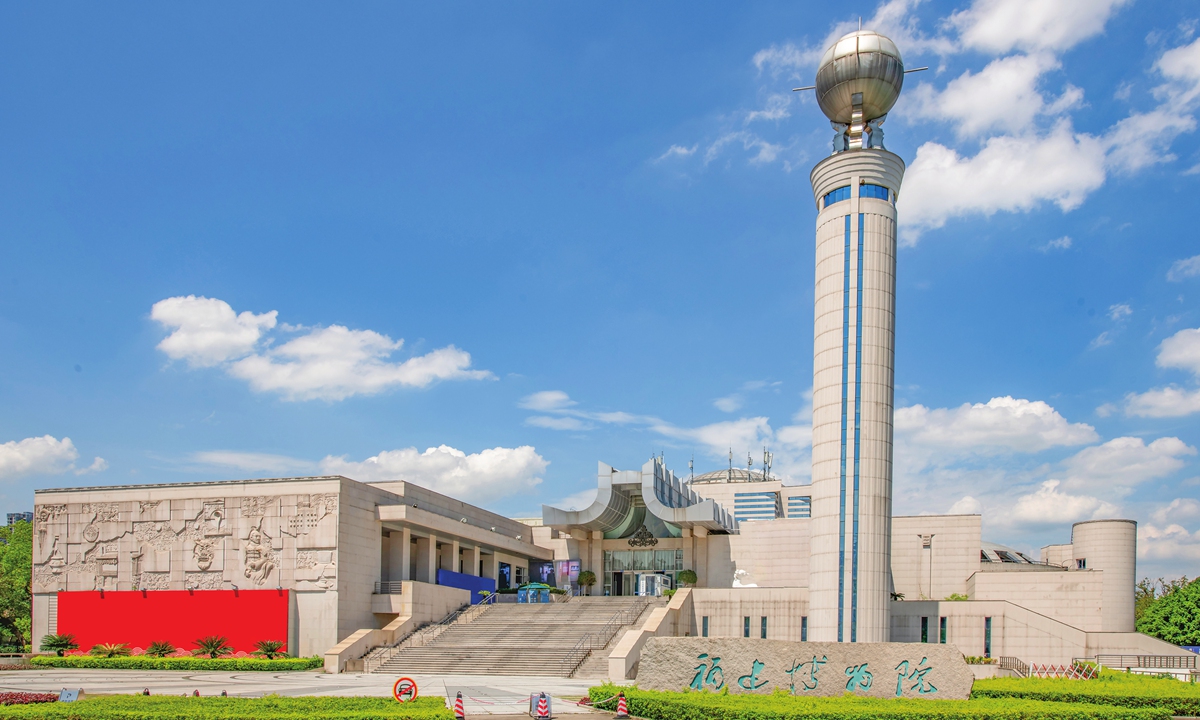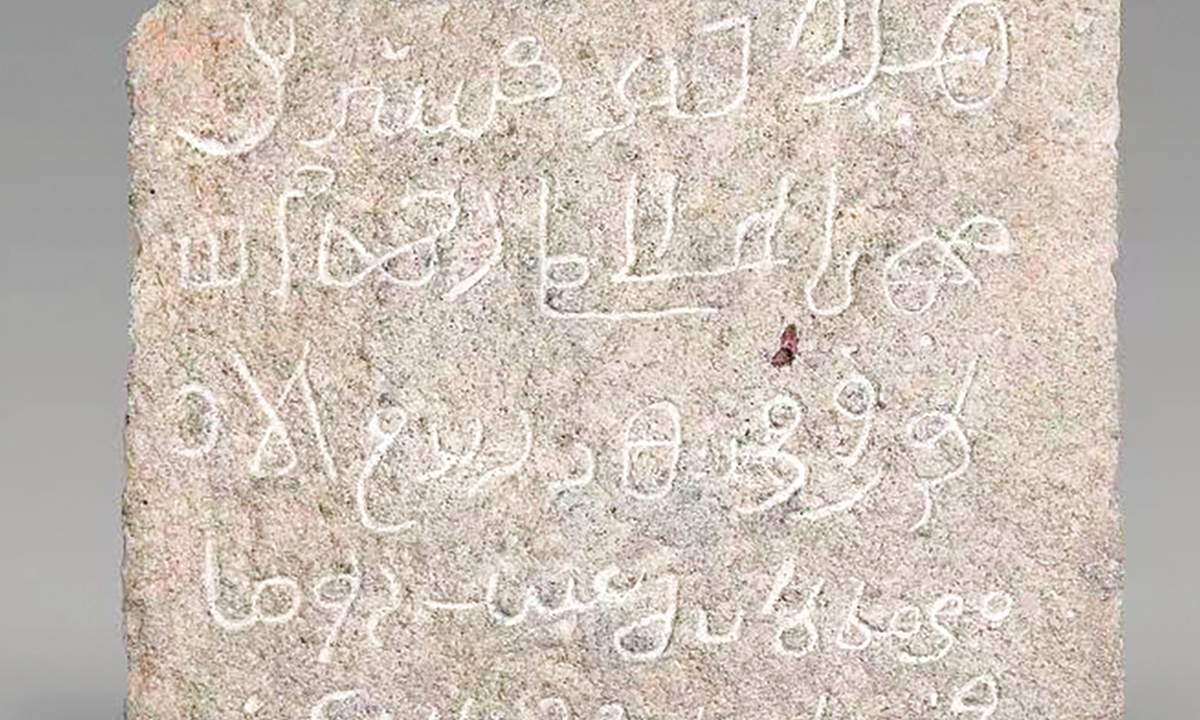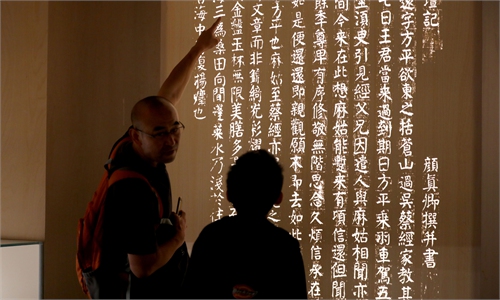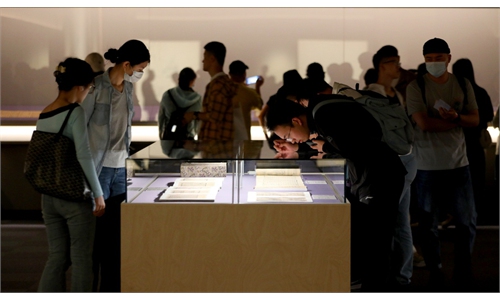ARTS / ART
BRI empowers Chinese institutions on International Museum Day
Connected prosperity

Fujian Museum Photo: VCG

An Armenian tombstone on display at the Fujian Museum Photo: Courtesy of Fujian Museum
Amid the elegant melody of the Chinese folk song Jasmine Flower, two musicians from China and Armenia play two traditional woodwind instruments from their home countries. They are surrounded by visitors who were attracted by the harmonious tunes.
This was the scene on Thursday at the Fujian Museum in Fuzhou, capital city of East China's Fujian Province, China's main venue for activities celebrating 2023 International Museum Day. Activities celebrating the day are being held all across China until Saturday.
During the opening ceremony, Li Qun, head of China's National Cultural Heritage Administration (NCHA), revealed that there are now 6,565 registered museums in the country, ranking among the top in the world, while 382 new museums were added in 2022.
The first official nationwide festival after the three-year epidemic has brought back to the museum the hustle and bustle of crowds who hope to get a close glimpse at the highlighted exhibitions marking the 10th anniversary of the China-proposed Belt and Road Initiative (BRI). A local visitor surnamed Xiong told the Global Times that each time he takes his son there the museum is always full of visitors, and that he believes the reason for its popularity is the "museum fever" in the country.
"Chinese now have stronger cultural confidence," he said.
Bestowing new vitality
As the main exhibition for International Museum Day, Good Fortune Sails Across the World: The Cultural Hallmarks of the Maritime Silk Road displays 295 sets of cultural relics from 35 museums across the country, revealing how China's advanced ceramic skills were spread through the Maritime Silk Road to impact the world.
Yu Xie , 30, told the Global Times that the exhibition took her back to the Ming Dynasty (1368-1644), when navigator Zheng He set out to sail the seven seas and left behind numerous stories of friendly cultural exchanges with other cultures. She said she was very "proud" to be a local in Fuzhou as so many exquisite porcelains made here were exported around the world and influenced so many people.
The BRI is bestowing new vitality to maritime trade, which can be seen in the increased exchanges among countries involved in the BRI.
The first-ever Armenian cultural relics exhibition in China, The Exhibition of Armenian Cultural Treasures of the 19th and 20th Centuries, mainly displays ornaments, national clothing, carpets and iconic photographs of the capital Yerevan from the Yerevan History Museum.
Just like China, Armenia also boasts a time-honored history and has had close cultural exchanges with its neighbors through the ancient Silk Road. The country is a significant fortress connecting the Eurasian continent, and is also a hub and key node in the international transport corridor under the BRI.
Shi Zhang, curator of the exhibition and an employee of the cultural communication center at the Fujian Museum, told the Global Times four Armenian experts came to China to help with the exhibition layout, and they were very enthusiastic to provide guidance to local volunteers by holding cultural salons.
Gevorg Orbelyan, curator at the Yerevan History Museum, told the Global Times that he hopes Chinese tourists can better understand the culture and history of Armenia after visiting the exhibition.
In the second half of 2023, an exhibition on Chinese culture is set to debut in Armenia and further cooperation will be carried out, according to the two curators.
Besides the two exhibitions, an exhibition on Dehua porcelain, a kind of white porcelain that was exported to Japan and Europe, is also set to be held as part of the celebration.
'Sustainability, well-being'
Under the theme "Museums, Sustainability and Well-being," the events held at the museum showcase the latest achievements in China's museum development, as well as the remarkable contributions that museums have made to the country's overall economic and social development.
Experts in museology across China have expressed their ideas and shared their opinions about this theme. Louis Ng, curator of the Hong Kong Palace Museum, said at a forum that they have carried out measures including installing LED lights and setting up barrier-free access for the disabled to better achieve sustainable operations and care for the well-being of visitors.
Emma Nardi, president of the International Council of Museums (ICOM), said in a recorded video at the opening ceremony on Thursday that she was glad to see more Chinese professionals contribute to the global network within the museum community.
She also highly complimented Chinese museums that continue to explore new practices in areas such as digital transition, innovative resources allocation and deep engagement with local communities. "Through these approaches, you are managing to increase inclusiveness, achieve sustainability and benefit more of the public," she said.
To further improve the quality of exhibitions and museum management, officials announced the annual "Top 10 Exhibition Highlights of National Museums" as well as the results of the national first-level museum operation evaluation.
The Qin and Han pavilion at the prestigious Shaanxi History Museum in Xi'an, capital of Shaanxi Province, will be the main venue for next year's International Museum Day celebrations in China. Currently, the pavilion is still under construction. It is expected to be put into trial operations in early 2024 and officially opened to the public on May 18, 2024, according to NCHA.



